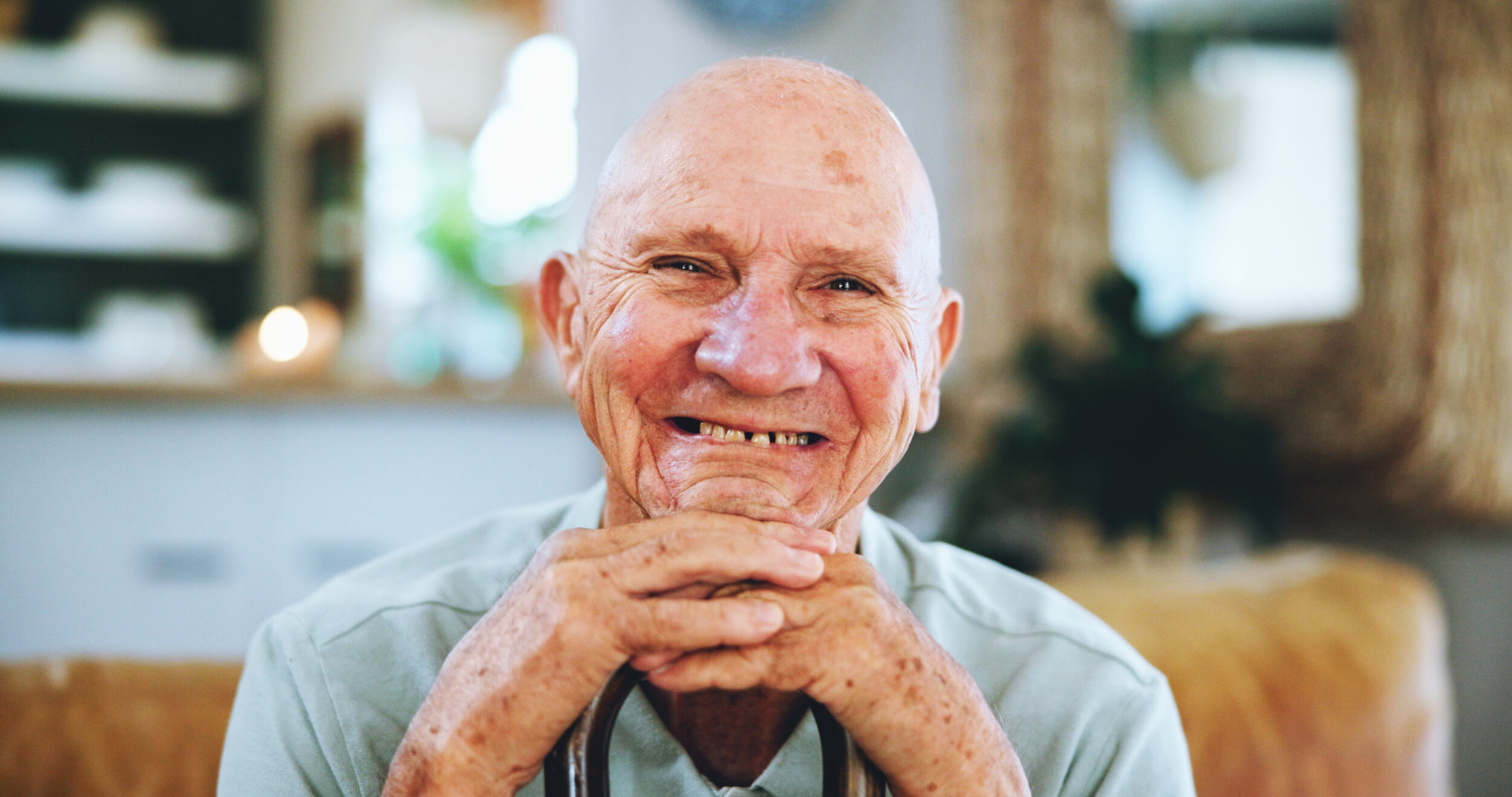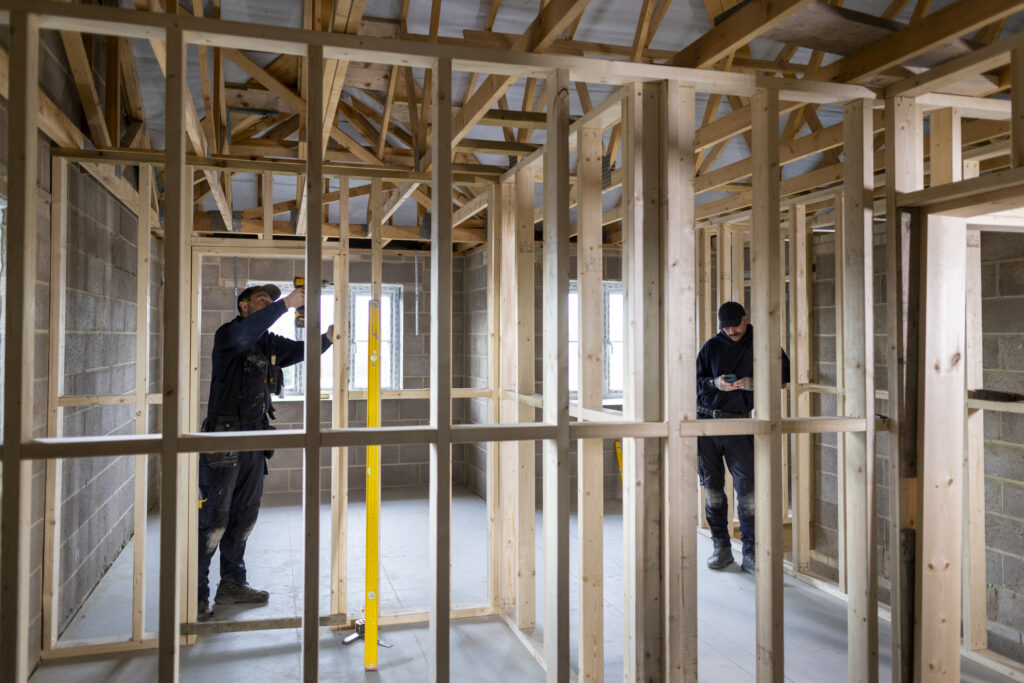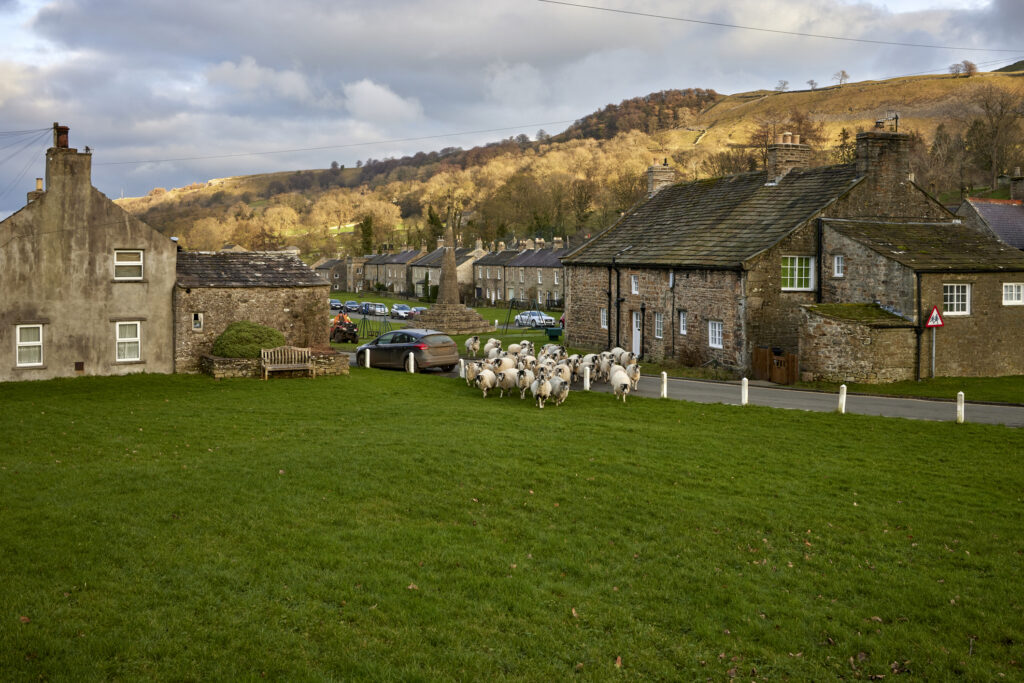
“Charity Bank is a trusted partner, not just a bank”
“With Charity Bank, you’re dealing with real people. They took the time to understand what we were seeking to achieve and offered us suggestions and solutions.” Read our interview with Glen Keeling, Chair of the Consolidated Almshouse Charity of Swanscombe.
Why did you need a loan?
We bought a parcel of land at the back of our property to build three new homes on. We planned to fund the build with our own reserves, but then COVID hit and the price of materials went through the roof. We could have put the project on hold indefinitely, but we knew that prices would never come down much and, in the meantime, we’d be losing the income that those new properties could bring in. So, we needed to get a loan.
Why did you decide on Charity Bank for your loan?
We went to the Almshouse Association, but they could only lend us £100,000. We approached our bank and Charity Bank. Charity Bank were more forthcoming; they were quicker to respond and seemed eager to visit and to understand the project.
Why did you decide on timber frame homes?
They’re easier and quicker to build. That meant the development time was shorter, which meant less insurance for the building site, and also meant there would be less of a negative impact on local residents.
The wooden frame is skinned with bricks, so they look like standard homes. They have underfloor heating and they can be adapted to meet medical needs. We want these homes to be of a standard that we’d be happy to live in. I want to be able to sleep at night knowing that a vulnerable resident is comfortable in their home, not just grateful to have a roof over their head.
One of the new residents had been homeless for 10 years. His new home has revolutionised his life. He told me, “This time last year, my kids wouldn’t see me, but now all three of my children come around, and so do my grandchildren.” It puts it all into perspective.
The new properties will clearly benefit the residents, but are there other benefits for the charity?
There are three other wins from this project. Number one is that our public exposure has increased massively. We’re a small charity and wanted to become more forward facing in the community. We went out into the community to explain what we were doing and why, and people were interested. We’ve gone from a largely hidden secret, to one that people have taken under their wings.
For example, the new resident who was homeless had nothing. People came forward to offer us surplus household goods. We got offered sofas, fridges, washing machines, beds, everything. We had some thefts from the site, but the local community donated over £1000 to help us get over that. So in terms of ownership, the charity is now more owned by the community it serves than it ever has been.
The second positive is that we’ve gone from five properties to eight properties, which means an extra £26,000 a year in revenue. Our income stream is now at £74,000 a year, which means that once our loan is paid off, we can buy an open-market property every four years. Before this build, we were looking at doing that every eight years.
The third benefit is that it’s really empowered a sense of community within the almshouses. The garden is shared between the two sites, so we’ve built a community within a community, who can all support each other.
Together, the three positives create a good solid foundation for the charity. Back in 1907, when the charity was formed, the aim was for the almshouses to stretch all along Milton Road. We’re now much closer to achieving that original plan, which is absolutely astounding.
Did you receive any grant funding towards the building work?
The ironic thing is that, going into this, no one wanted to give us a grant. We approached people and they were sympathetic, but they said it was too much money to benefit such a small number of people. We decided to go ahead and do it anyway, and when we met with Charity Bank, they introduced us to a £25,000 grant and also managed to get us a green grant, which paid for the survey.
When we updated our pitch pack with the large grant and the Charty Bank loan, we were then able to get a £15,000 grant from the Quaker Housing Trust. Then the Barratt Foundation gave us a grant of £3,500. So, it was through Charity Bank that we started unlocking more funding.
As trustees taking on the charity’s first loan, what were your concerns?
On a trustee board, you get a diverse mix of people. You get ‘neither a lender nor a borrower be’ people, and you get people who are more inclined to borrowing. So, we had quite a lot of debates…
The loan is secured against our existing property, so we really had to think long and hard about whether it was the right thing for us, and in reality, it was the only option. There were no other options. If we wanted to grow the charity, we had to borrow. We did think, “Do we remortgage our own homes, lend the money to the charity, and then the charity will pay us back?” That comes with a personal risk that we didn’t want to take.
So, the board decided to go ahead and take on a loan, but on the condition that we can pay it back early. Charity Bank were happy with that and they also agreed to interest-only for six months. So, they met us halfway, clearly understood what a charity is all about, and supported us.
Did that help to reassure those trustees who were worried about taking on a loan?
Yes. I work in private banking. Mainstream lenders need to make decisions for the good of their shareholders, whereas Charity Bank are more in tune with the charity model. We felt they were more likely to be sympathetic towards us and we really saw that when working with Danny Wilson-Dodd and indeed when working with all of the team. They all took time to understand us.
In what way?
When we called them to ask a question or do a drawdown, they understood the project and would ask about progress. It wasn’t a yes/no conversation. It was more like, “How are you getting on with your solar power? How’s this coming along? How’s that coming along?” Danny put us at ease through his genuine concern for our beneficiaries and appetite for the project.
Charity Bank are small enough to care, but big enough to understand.
How did you find the process of getting the loan?
It was pretty easy. And in actual fact, they asked questions that we hadn’t thought about. When we did our simulated returns on what our revenue would look like year one to year five, Danny came back and asked for month-by-month figures. We had to run our monthly outgoings on a spreadsheet and simulate them that way, which meant we could all look at the finer detail. He’d say things like, “In September during the build, will you remain cash positive?” They challenged us in the right way to think about everything – the viability of the project and the viability of the outcome.
Was the level of paperwork what you expected, given that you work in finance?
100% as expected. They did apologise in advance that it was a bit manual, but I didn’t find it particularly onerous. I found it comparable, if not easier, than other banks.
Actually, the forms were not as intrusive as you would expect from a bank. So, for example, you’d have a one pager on the utilisation request to sign and send over, whereas with a regular bank, you’d have to re-sign the T & Cs at each level.
There was a reassuring level of security and care. We’d get a call to recheck our account number before a drawdown for example.
Was it helpful having a relationship manager?
Yes, a named contact point is always a welcome thing. When you go through a contact centre, you ring up, do ID verification and then get put on hold while they read the case notes. There wasn’t that frustration with Danny. I’d ring Danny, and it would be, “Hey, Glenn, how are you?” He would know from previous conversations what stage we were at. He remembered us. He would also offer solutions, because he’s seen many, many projects like ours.
When we spoke to Lisa in the lending administration team, she was on exactly the same page. It was clear that Danny and Lisa were speaking because she would know what was going on. So for us, having that small, tight-knit support team at Charity Bank was amazing.
As an example, Lisa was going on holiday and knew we were planning a drawdown. She cared enough to reach out to say, “I’m aware where you are in your plans. This is what I’m doing. This is who can help you in my absence. This is what we can do to support you.” It felt like we were their only customer.
They weren’t over-bearing, they weren’t under-bearing; they were there to support us and they still are. They’re a trusted partner, rather than just a bank.
Would you go back to Charity Bank if you needed another loan?
Yes, straight away. We would not hesitate to use them again.
What would you say to other charities who are thinking of applying for a loan?
It all comes down to project planning. Your trustee board has made a decision for the benefit of the greater community. You might be nervous and it can seem like a big jump, because you’re already volunteering your time and now you’ve got to deal with the extra paperwork, but it’s really not as bad as it seems. With Charity Bank, you’re dealing with real humans, real people, not some automated algorithmic programme!
They took time to understand our charity. They took time to understand what we were seeking to achieve. They offered us suggestions and solutions, and they really got behind us. As a trustee board, that external validation is worth more than anything. It gives you that boost and that confidence to go for it.
So, don’t hold back. Don’t be afraid to have those initial conversations, because those conversations will lead to the right outcome for your charity. As a trustee, you’ve got to do what’s best for your charity and your beneficiaries, and Charity Bank will support you to do that.
Are you planning to develop more homes?
We’ve always got plans. We purchased a bungalow on the open market and if the ones on either side come up for sale, we’d like to buy those, as together the three bungalows would fit very nicely into our support model.
We’ve also identified two other sites locally that we’d like to acquire and develop. Both the parish council and the main council support us on that.
However, we’re a volunteer-based organisation with no paid staff, so we don’t want to expand too quickly. We’re making sure that we’ve got good financial footings beneath us. We want to pay off our loan, and we want to ensure that the existing properties really come together and are embedded in the community. After all, we’re a long-term solution, not a short-term profit-making machine!
To ensure the long-term success of this charity, we need to develop a model where one or two members of staff run the charity on behalf of the trustees. That would enable us to really give the charity wings.
If you need a loan for your almshouse or community housing association, please contact Charity Bank at [email protected].
About Charity Bank
Charity Bank is the loans and savings bank owned by and committed to supporting the social sector. Since 2002, we have used our savers’ money to make more than 1380 loans totalling over £580m to housing, education, social care, community and other social purpose organisations.
Nothing in this article constitutes an invitation to engage in investment activity nor is it advice or a recommendation and professional advice should be taken before any course of action is pursued.


